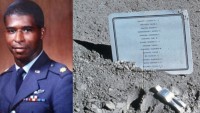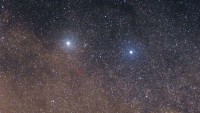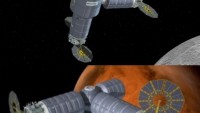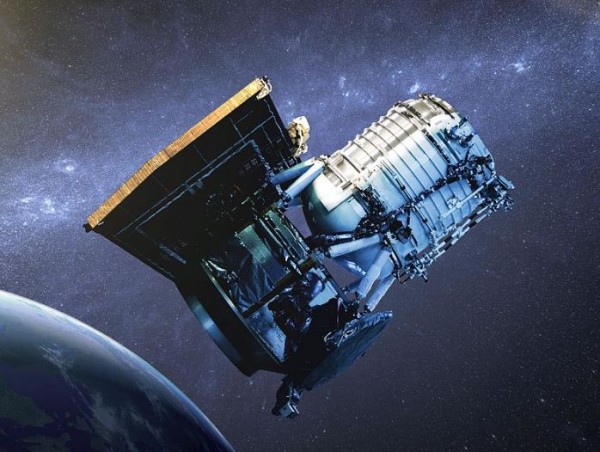Techie Billionaire and Amateur Asteroid Hunter Says NASA’s Asteroid Data Deeply Flawed
| Arthur Dominic Villasanta | | May 24, 2016 08:15 PM EDT |
(Photo : NASA) At the center of controversy: the WISE space telescope
Dr. Nathan Myhrvold, billionaire techie, molecular chef, prize-winning wildlife photographer and one of the planet's leading patent trolls, is accusing NASA of grossly underestimating the sizes of asteroids and therefore the dangers of large asteroids striking the Earth.
Using NASA's own data, the amateur asteroid hunter concluded that NASA has underestimated the sizes of over 157,000 asteroids observed by the space agency's Wide-field Infrared Survey Explorer (WISE) space telescope by as much as 300 percent.
Like Us on Facebook
"The bad news is it's all basically wrong," said Myhrvold. "Unfortunately for a lot of it, it's never going to be as accurate as they had hoped."
WISE is an infrared-wavelength astronomical space telescope launched in December 2009 but placed in hibernation in February 2011. It was later reactivated to conduct a four-month mission extension called NEOWISE to search for Near Earth Objects (NEOs) such as comets and asteroids.
NEOWISE used heat data to calculate the size and reflectivity of 157,000 asteroids. The reflectivity of an asteroid tells how easily it can be detected.
Dr. Myhrvold wrote a paper analyzing his take on the results from NEOWISE and posted it on arXiv.org. He also submitted the paper to the journal Icarus for review.
Dr. Myhrvold slammed NASA's WISE and NEOWISE teams that published papers estimating the sizes of asteroids, claiming the results are riddled with bad statistics and analysis.
"None of their results can be replicated," he claims. "I found one irregularity after another."
The basic problem, he believes, is NEOWISE's "very funky, ad hoc, invalid set of statistical analyses."
Dr. Myhrvold, however, isn't an astronomer and has never done research on asteroids before.
In 2011, the WISE and NEOWISE teams said they could figure out the diameter of asteroids with an accuracy greater than 10 percent based on WISE data.
Using his own method, however, Dr. Myhrvold argues that errors in the asteroid diameters should be 30 percent and not 10 percent as claimed by NASA. In some cases, NASA's errors in size estimation might be as large as 300 percent.
Among NASA's other sins were ignoring the margin of error that comes from extrapolating a small sample size. He claims NASA also neglected to include Kirchhoff's law of thermal radiation in their thermal models of the asteroids.
NASA was, of course, incensed by Dr. Myhrvold's "science."
"It's overly simplistic, and he makes some assumptions that are not valid," said Dr. Lindley Johnson who is responsible for NASA's program to protect the Earth from asteroids and NEOs.
Dr. Amy Mainzer, the principal investigator for NEOCAM and NEOWISE, said the issues raised by Dr. Myhrvold are best addressed by the experts reviewing Dr. Myhrvold's paper.
"We believe at this point it's best to allow the process of peer review -- the foundation of the scientific process -- to move forward," she said.
Dr. Mainzer, however, said the funky data referred to by Dr. Myhrvold appears to be due to his misunderstandings and mistakes. She noted a follow-up study showed NEOWISE's measurements of asteroid diameters agreed with independent infrared observations to within a 10 percent margin.
UCLA astronomer Ned Wright, the principal investigator for the WISE mission, said he discovered several problems with Dr. Myhrvold's paper, including the equation that confused radius with diameter.
"For every mistake I found in his paper, if I got a bounty, I would be rich," said Wright.
Wright said that WISE's data match very well with two other infrared telescopes, AKARI and IRAS.
TagsDr. Nathan Myhrvold, NASA, Wide-field Infrared Survey Explorer, WISE, NEOWISE, near-Earth objects, Dr. Lindley Johnson, Dr. Amy Mainzer, Ned Wright
©2015 Chinatopix All rights reserved. Do not reproduce without permission
 Fallen Astronaut Memorial on the Moon Omits Name of first African- American Astronaut
Fallen Astronaut Memorial on the Moon Omits Name of first African- American Astronaut Russian Billionaire, Republican Congressman Want NASA to Build a Spacecraft to Travel to Alpha Centauri
Russian Billionaire, Republican Congressman Want NASA to Build a Spacecraft to Travel to Alpha Centauri New Horizons' Bid to Explore 2014 MU69 in Kuiper Belt Endangered by NASA
New Horizons' Bid to Explore 2014 MU69 in Kuiper Belt Endangered by NASA Orbital ATK Proposes Building Manned Lunar Space Station by 2020
Orbital ATK Proposes Building Manned Lunar Space Station by 2020
EDITOR'S PICKS
-

Did the Trump administration just announce plans for a trade war with ‘hostile’ China and Russia?
-

US Senate passes Taiwan travel bill slammed by China
-

As Yan Sihong’s family grieves, here are other Chinese students who went missing abroad. Some have never been found
-

Beijing blasts Western critics who ‘smear China’ with the term sharp power
-

China Envoy Seeks to Defuse Tensions With U.S. as a Trade War Brews
-

Singapore's Deputy PM Provides Bitcoin Vote of Confidence Amid China's Blanket Bans
-

China warns investors over risks in overseas virtual currency trading
-

Chinese government most trustworthy: survey
-

Kashima Antlers On Course For Back-To-Back Titles
MOST POPULAR
LATEST NEWS
Zhou Yongkang: China's Former Security Chief Sentenced to Life in Prison

China's former Chief of the Ministry of Public Security, Zhou Yongkang, has been given a life sentence after he was found guilty of abusing his office, bribery and deliberately ... Full Article
TRENDING STORY

China Pork Prices Expected to Stabilize As The Supplies Recover

Elephone P9000 Smartphone is now on Sale on Amazon India

There's a Big Chance Cliffhangers Won't Still Be Resolved When Grey's Anatomy Season 13 Returns

Supreme Court Ruled on Samsung vs Apple Dispute for Patent Infringement

Microsoft Surface Pro 5 Rumors and Release Date: What is the Latest?










